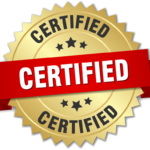Have you been listening to a lot about website development these days? Which makes you think of being one of them? Then you have come to the right place.
Website development refers to all of the grinds that involve creating a website. Everything from coding and markup to scripting, network configuration, and CMS development is covered.
Though it is not easy to be a web developer and get a web development job, in this guide, we have jolt down the basics and website development process checklist to make it easy for you to get started with website development.
So, without any further delay, let’s start learning.
What abilities are required to be a web developer?
Before proceeding to the basics of web development, let’s look at the skills a web developer must have.
A web developer can be anyone. You don’t need an eye-catching degree in computer science to grasp the skills, but there are a few things you should know before you start looking for jobs in the field.
- Fundamentals of how the websites and internet operate
- Framework and libraries such as React.JS, jQuery, and Bootstrap
- HTML, JavaScript, and CSS basics
- GitHub and Git
- Other programming languages such as Python and Ruby, if you are going to be a back-end developer
These all lay a solid foundation for the website development process, so learning it slowly and step by step is essential.
Okay, now that you know a website’s building blocks, let’s start with the basics.
The Basics
The internet comprises 3 interconnected features: Websites, Servers, and Browsers.
Websites are collections of information and files, and we can access different websites via a computer and a server.
Servers store all of the data from the websites in an extensive network.
Browsers load and display content on your computers.
Besides this, every website has a front end (the one you see when visiting a website) and a back end (the server side). The front end is everything a user sees and experiences when visiting a website. The backend is where data is received, stored, and sent.
Also, everything you see on a website, including this one, comprises HTML, CSS, and JavaScript files. These are the essential ingredients in web development recipes, most often known as “Programming Languages.”
So, let’s find out what they do!
Front-end Basics
As stated earlier, a website’s main ingredient is its programming language. Therefore, to be a web developer, you must excel in these languages. HTML, CSS, and JavaScript are 3 of the most used programming languages, and these are the files loaded in the browser on the client side.
1- HTML
The foundation of all websites is HTML or HyperText Markup Language. When you visit a website, it is the primary file type that shows in your browser. The HTML file contains all of the content on the page and employs tags to distinguish between types of content. They are the pre-defined tags representing various functions that are then “translated” into textual information on the screen. These tags are enclosed in angle brackets.
For example, the text enclosed by <b> will be bold.
Tags can be used to create headline titles, bulleted lists, images, paragraphs, etc. HTML tags have some styles attached to them, but they are basic, similar to what you’d see in a Word document.
2- CSS
CSS or Cascading Style Sheets is a style sheet that describes how HTML elements will look on a webpage. It also allows you to style HTML content so it looks nice and fancy.
CSS is used to control your website’s appearance, custom fonts and layouts, formatting, and style, such as border colors, RGB values, background images, etc. You can even create shapes and animations with the help of CSS.
CSS has a lot of depth, and people often gloss over it to move on to things like JavaScript. However, before hopping to JavaScript, you must first learn to transform a design into a website layout using CSS.
Also, if you are aiming to be a front-end developer, you must acquire very strong CSS skills.
3- JavaScript
JavaScript is a programming language created to be used in browsers. It is used to manipulate the behavior of your website. It is one of the world’s most popular and widely used programming languages, with a low entry barrier and prompt results based on the progress of your code.
You can make your website dynamic using JavaScript, which means it will react to different inputs from the user or other sources. You can create a “Back to Top” button that returns the users to the top of the page. You can also create a weather widget that displays the current weather based on the user’s location in the world.
JavaScript makes websites more interactive by modifying HTML and CSS elements. Users can use JavaScript to click a button, scroll to the bottom of a page, or display photos in a moving carousel.
Website Development For Beginners
Making a website as a beginner is not a piece of cake and requires some sweat and blood. Each development path is unique depending on the type of programming languages, resources, and website.
You can simply learn a programming language through a website development course, or you can follow the guide below to have a gist of how it all works.
Before starting with web development, you must take the following steps.
1- Make a Plan
Before putting your fingers on the keyboard to make a website, you must ask yourself the following questions:
- What’s the purpose of your website?
- What’s your target audience and niche?
- What’s your budget for this?
- What kind of website are you creating? (For instance, will it be an e-commerce website or a basic informational one?)
2- Create a Sitemap
The next step is to create a sitemap. A sitemap provides a developer with the information required to meet your vision, much like a business plan does for a potential investor.
Here are some questions to consider when designing your website:
- Which web pages do you require?
- How do you divide those pages into subcategories?
- How will you link the pages?
In this regard, you can also consult with other teams in your organization. If you have an SEO or content strategy team, their advice would be valuable for linking and categorizing the pages.
3- Create The Website Code
Writing code is the next move in the web development process.
You can use various coding languages for the front-end and back-end of websites. These various languages collaborate to build and run your website.
You can write code in any programming language mentioned above, including HTML, CSS, and JavaScript.
4- Purchase a Domain Name
The next step is to assign your website an IP address. It also requires a domain name, a specific website name that visitors can use to locate your website.
5- Start Building Your Website
After you’ve registered your domain name and linked it with your host, you’re almost ready to publish your work on the internet.
But there are a few things you’ll need to double-check before the official launch. These include delegating responsibilities to your team, thoroughly testing your site for bugs, optimizing for SEO, performing a final check before “flipping the switch,” and making your site live.
Frequently Asked Questions
- How do I start website development?
There are many website development courses available on the internet. You can get enrolled in one of them to get started with website development. Or look at this guide to get the gist of it.
- Can I learn web development in 3 months?
Yes, you can. However, you cannot excel in 3 months as it requires hands-on practice. And as the saying goes, “Practice makes the man perfect.”
- Is web development a good career?
There is a potential increase in the scope of web development. If you choose it as your career, it’s a good decision as everything is going digital these days.
Conclusion
Web development is one of the fastest-growing industries. Every business tends to create its website to compete with others and boosts sales. We have mentioned some of the notable practices and tips to cultivate web development and learn its basics.





5 Responses
I was extremely pleased to uncover this page. I want to to thank you for your time due to this wonderful read!! I definitely savored every little bit of it and i also have you book marked to look at new things in your site.
Your point of view caught my eye and was very interesting. Thanks. I have a question for you.
Thank you. Yes please ask.
Your article helped me a lot, is there any more related content? Thanks! https://accounts.binance.com/en/register-person?ref=JHQQKNKN